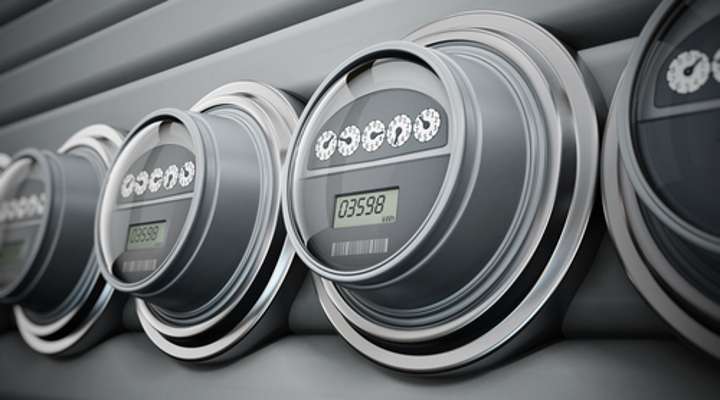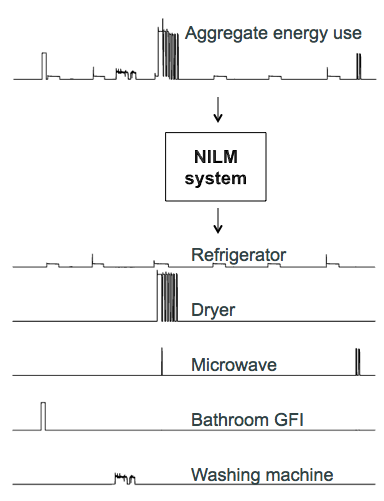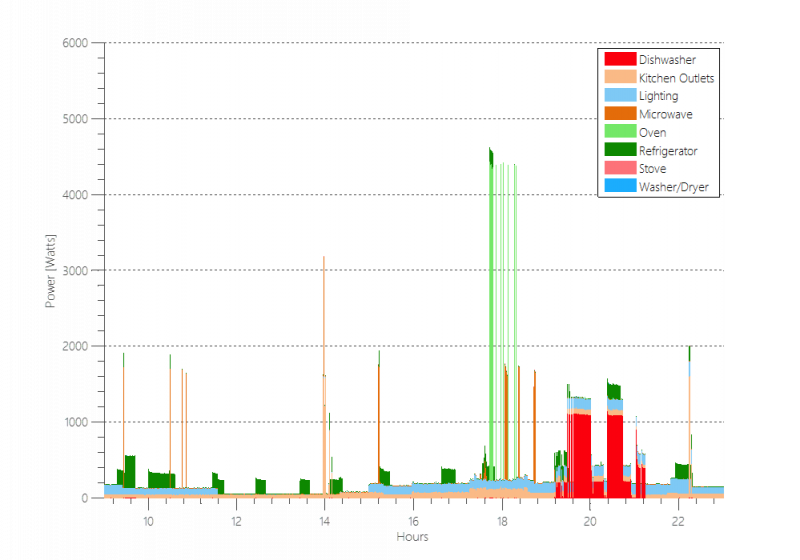Engineers seek energy insights by reading a building's electrical signatures

Each of the appliances in your home has its own personality. Not that your coffeemaker and refrigerator are dancing the night away à la Beauty and the Beast, but they do each have their own energy signature.
Your coffeemaker likes to turn on around 7 a.m. every day and use 600 watts of energy for precisely five minutes. Your refrigerator, however, is active all day long, drawing 250 watts for tens of minutes at a time at regular intervals.
With enough insight, it's possible to determine which electronics most of the energy in a home is feeding by these sorts of patterns. There are already several commercial devices available for household use that attempt to do just this, theoretically providing more control over energy usage and helping to save money.
But these industry pioneers leave plenty to be desired. They struggle with recognizing different appliances below a certain power consumption level. Their installation is complicated and their insights are limited. They can't be used in larger industrial or professional buildings.
That's where engineers at Duke University are entering the playing field.
"With the rise of smart meters that have the potential to include apps, we've started exploring methods for real-time energy disaggregation that could be deployed instantly into millions of smart meters around the country," said Kyle Bradbury, managing director of the Energy Data Analytics Lab at Duke, who co-leads the project with Leslie Collins, professor of electrical and computer engineering at Duke.

Smart meters are digital replacements for the traditional analog energy meters used for decades in most every building across the nation. Their benefit is the ability to transmit data back to the energy provider every hour. This gives utilities a better understanding of power demands and trends in usage, notifications of power outages, and real-time monitoring of power quality. It also allows them to charge more during peak hours.
Bradbury wondered if these meters could be pushed to provide even more. If the software that teases out your coffeemaker from your refrigerator and television could be made small and efficient enough, it could be programmed directly onto these meters already being installed on millions of homes. And unlike today's commercial products, these newer, smarter meters could provide the information to both consumers and utility companies.
The trick is finding that line where there's enough data to meet these goals, but not so much that it overloads the meters and their networks.
"Right now, a smart meter typically transmits data every 60 minutes, and that's too large of a sample period to be able to pick out different appliances being used," said Mary Knox, a research scientist in Collins's laboratory. "We're finding we can get pretty good results at intervals of six seconds, but we're trying to see what we can accomplish with different algorithms by pushing that out to every 30 or 60 seconds."
Many energy companies now send their customers monthly information on how their energy use stacks up to other households. Research shows that these insights help a home save roughly three percent on its energy bill. While that's an improvement, the number jumps to 12 percent when customers have access to real-time information.

"The potential for energy savings is huge, as 40 percent of the energy used in the United States is being consumed by buildings," said Bradbury. "That figure is split evenly between residential and commercial buildings. But because most research is focused on residential consumers, there's an opportunity to move into commercial spaces."
The challenge is that there's much less information available about how industrial and professional buildings use energy. Many use large, power-hungry machines that don't have a parallel in residential spaces. Others have hundreds of monitors, computers, lights and mini-refrigerators in use at any one time, making singling any one type of device out that much more complicated.
To determine if this approach is even possible on a commercial scale, Bradbury and Knox are developing synthetic datasets—computer models of the thousands of devices that might be drawing power in a given business. By developing new algorithms and applying them to the synthetic data, they hope to determine the feasibility of disaggregating the energy usage of a commercial business.
"Maybe different businesses might have one or two key pieces of equipment that we could pick out from the sea of offices that turn out to be crucial to energy savings," said Bradbury. "It's a challenging area that we don't even know if we can help with yet. But because a single commercial building uses as much power as dozens of residential households, the potential is too large to ignore."
"This line of work is going to be crucial in the next decade as more people begin using smart meters, smart thermostats, electric cars, home energy storage systems, solar panels and devices connected to the Internet of Things," said Knox. "We're just starting to understand the value of this data."
















